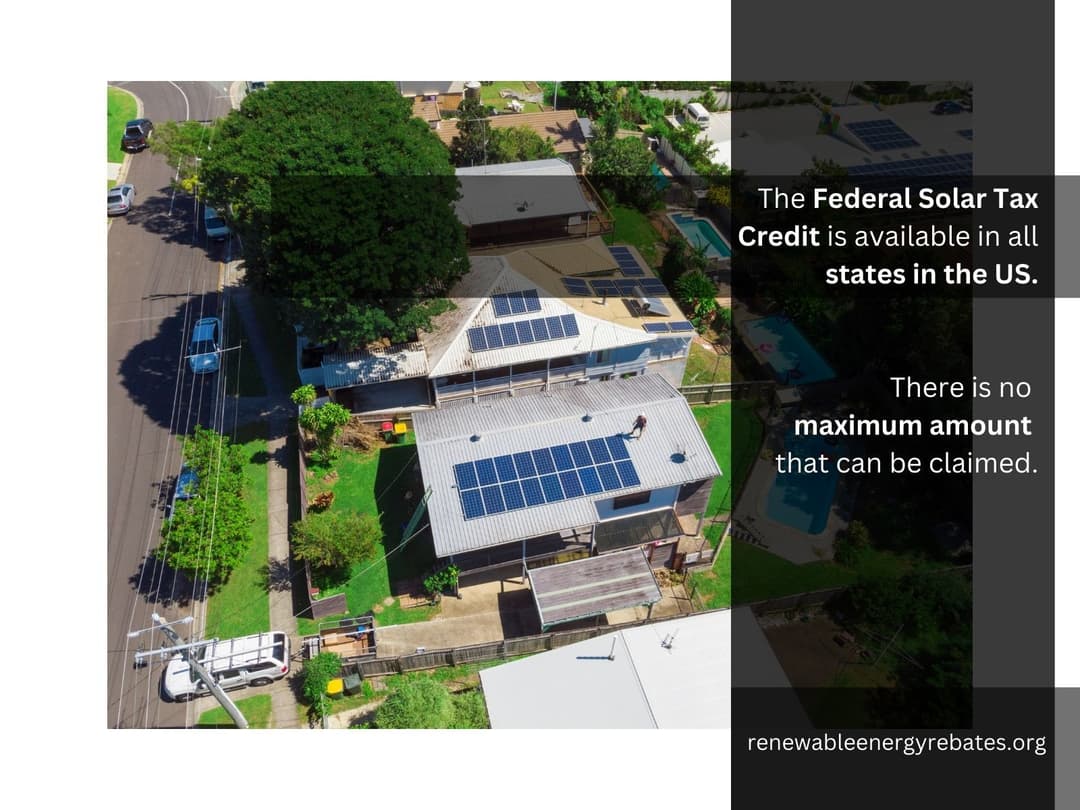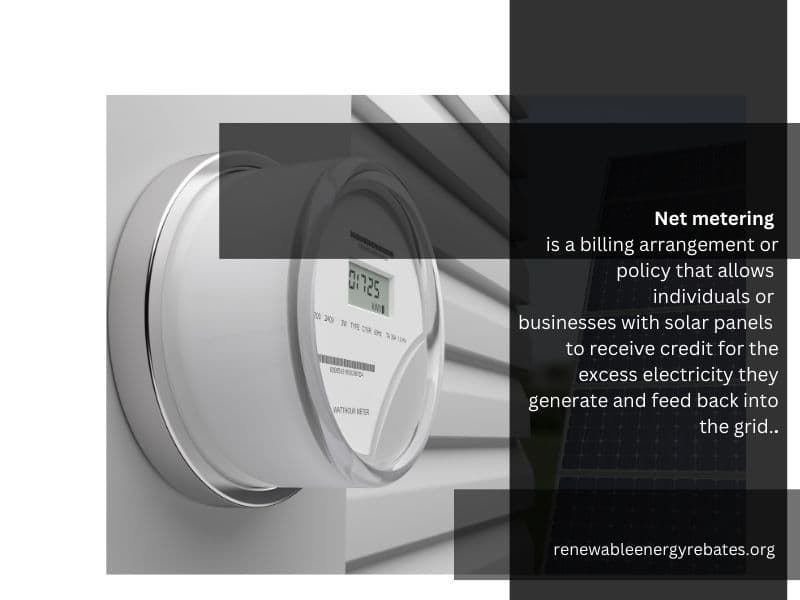Colorado Solar Rebates and Incentives
How Much Can You Save on Solar in Colorado?
Key Details
- Energy incentives available in Colorado include the Federal Solar Investment Tax Credit (ITC)
- Net Energy Metering may be available to residents
- Colorado provides a property tax exemption for Residential Renewable Energy Equipment
- Colorado's Property-Assessed Clean Energy (PACE) Financing allows eligible property owners to finance 100% of renewable energy upgrade
Colorado Energy Profile
Colorado is one of the sunniest states in the United States. It ranks 6th in terms of total sunlight received among all the states in the US, with 4,960 kilojoules of sunlight per square meter.
6.2% of all energy produced in Colorado comes from solar power.
As of 2023, Colorado had 110 solar installations and over 7,000 solar jobs. Additionally, the Centennial State had up to 452,009 solar-powered homes.
Colorado Solar Rebates and Incentives at a Glance
| Colorado Solar Incentives | State or Federal | Program Overview |
| Federal Solar Investment Tax Credit (ITC) | Federal | When installing home solar, qualified homeowners may be eligible for a tax credit of up to 30% of the system's cost. |
| Property Tax Exemption for Residential Renewable Energy Equipment | Federal | This is a Colorado property tax exemption that deducts the additional value of a solar panel installation from the home's assessed value |
| State Sales and Use Tax Exemption for Renewable Energy Equipment | State | This provides a 2.9% state sales tax exemption for households with solar energy systems. |
| Local Utility Company Incentives and Solar Rebates | Local | This awards monetary incentives for the purchase of brand-new rooftop solar panels. However, it varies depending on the utility and system size. |
| Xcel Energy Colorado Solar Rewards Program | Local | Provides compensation for each kilowatt-hour (kWh) the system produces |
As of 2021, Colorado’s total energy consumption per capita stands at 250.9 million BTUs. The state also ranks 28th among states in terms of residential energy consumption per capita at 65.1 million BTUs. The state’s commercial sector, on the other hand, consumes over 48 million BTUs of energy, ranking it 35th in the US.

How Affordable is Solar Energy in Colorado?
As of 2023, the average retail cost of grid electricity is 10.90 cents/kWh in Colorado. The average cost of Colorado solar panels is $2.44 per watt.
| State | Number of solar Installations | MW Installed | Average cost for grip power (2021) | Average cost per watts |
| Colorado | 110 | 2,309 | 10.90 cents/kWh | $2.44 |
In Colorado, it would cost $17,100 to install a 6kw solar energy system. Homeowners will be saving as much as $3,762 with the federal solar tax credit.
| State | Cost of installing a 6kw system | Federal tax credit value 2023 (30%) |
| Colorado | $17,100 | $5,130 |
Nearly two-fifths of the state's total solar energy in 2021 came from small-scale, customer-sited solar power generating installations.
In 2021, Colorado had the 13th-highest utility-scale solar power generation capacity among US states.
Federal Solar Tax Credit in Colorado
The US federal government provides federal solar tax credit as a tax incentive for Colorado residents. First made available in 2005 as a way to lower the cost of using solar power, it offers a tax credit that is equal to 30% of the installed system's worth.
The Federal Solar Credit covers batteries, inverters, solar panels, and other devices.
The federal solar tax credit was also introduced to help achieve the US government’s goal to reduce carbon emissions. With the solar tax credit, Colorado homeowners can reduce their PV solar energy system's cost by 30%.
However, this tax credit is only available to individuals who acquire their PV system outright (either with cash or a solar loan). Applicants will also need to make enough money to qualify for the credit. Tax-exempt corporations may be able to qualify for a direct payment.

The credit rate was initially expected to decline to 26% in 2022, 22% in 2023, and 0% in 2024. However, the Inflation Reduction Act, passed by Congress in 2022, retrospectively extended the credit tax by ten years.
In addition, the tax credit will decrease to 26%, 22%, and 0% by 2033, 2034, and 2035, respectively.
Eligibility
The following criteria must be met to qualify for Colorado’s federal solar tax credit.
- You are qualified for the federal tax credit if your solar system is brand-new or if it is being used for the first time between January 1, 2006, and December 31, 2023.
- Your system must be wholly yours. It shouldn't be rented because of this.
- You must install your solar energy system in the US.
- The system must be installed at your home or secondary residence in the United States, or at an off-site community solar project.
How do I claim the Federal Solar Tax Credit in Colorado?
Claiming your federal solar tax credit is easy. In Colorado, you can claim the federal tax credit for solar energy by doing the following:
- Print IRS form 5695 from the Internal Revenue Service website.
- Fill out the required fields on your solar energy system, your residence, and your installer.
- You can either file the papers yourself or send them to your accountant for filing.
Net Energy Metering in Colorado
Net metering is a billing system that rewards owners of solar energy systems for any production that is exported to the electricity grid. These individuals are referred to as “customer-generators”.
Colorado enacted legislation in March 2008 mandating municipal electricity providers with over 5,000 customers to offer net metering for residential systems. These systems can be up to 10 kW and commercial and industrial systems up to 25 kW.
If the amount of electricity the customer-generator produces exceeds the amount of electricity they can use, the excess is sent to the grid. However, if the customer-generator uses more electricity than they make, they pay the normal retail rate for the electricity consumed. The customer-generator is typically paid on a per kilowatt-hour (kWh) basis for extra electricity sent to the grid.
Depending on the state and local legislation in force, different levels of compensation apply in different places. Customer-generators may be reimbursed for surplus generation in some areas at the full retail rate or a smaller amount. Compensation amounts may be zero in some instances.

According to the Solar Energy Industries Association (SEIA), net metering has long been one of the best incentives for solar customers. For example, it helps increase the value of your home by increasing the value of your solar panels. It also enables homeowners to save on electricity long-term.
NOTE: In several states around the US, net energy metering systems are no longer as useful. Other jurisdictions are adopting a credit rate that is lower than the retail rate, while some states are completely abandoning the requirement. For instance, California just passed the NEM 3.0 net metering rule, which significantly lowers the credit rate.
How to Enroll for Net Energy metering in Colorado
Colorado residents who choose a professional solar installer will most likely be eligible for net metering. Usually, a representative will apply on their behalf.
If net metering is available, you can follow these steps to ensure you have access to it.
- Step 1: Talk to your electricity provider to find out if a bidirectional meter has been installed. If not, your provider must install one for no additional cost.
- Step 2: Find out if net metering is an option by speaking with your electricity supplier.
- Step 3: If net energy metering is an option, get in touch with a reputable solar expert in your area. Verify with the salesperson that the application procedure will be handled by the business. If not, ask your electric company how to apply yourself.
- Step 4: Start the installation process.
- Step 5: For a few months following installation, it is advisable that you audit your energy bills. Do this to make sure your system is generating credits as anticipated.
Colorado Property Tax Exemption
As of 2023, Colorado does not offer an exemption that applies to the underlying real property. Instead, it solely covers renewable energy personal property.
The Colorado Department of Local Affairs advises the county assessor to examine residential sales that include and do not have renewable energy personal property in each economic area.
It recommends it should be done during each reassessment year. This will be to see if such property contributes to an incremental rise in the value of all residential properties. If it is found that they do, the sales that contain solar energy property should be changed to exclude the property's contributory value.
According to 39-3-102 of the Colorado Revised Statutes, independently owned residential photovoltaic solar systems that meet the requirements in 39-1-102 (6.8) are exempt from Colorado property taxes. The solar electric generation plant must be situated on residential real property, produce solar power primarily for use in home improvements, and have a production capacity of no more than one hundred (100) kilowatts of AC electricity in order to be eligible for the exemption.
Colorado Property-Assessed Clean Energy (PACE) Financing
Colorado's PACE program enables property owners to finance 100% of the initial expenditures of an upgrade in renewable energy. Over the course of the financing term property owners repay the financing as a special assessment on their property tax bill. A PACE financing term may be as much as 20 years.
The annual energy savings usually outweigh the annual assessments, making PACE projects cash flow positive as early as the first year. Commercial, industrial, agricultural, nonprofit, and multifamily facilities may be eligible for C-PACE funding. When designing and constructing energy efficiency measures above and beyond what is required by the existing code, new construction may employ PACE financing for up to 20% of the total construction expenses.
Learn More about US Pace Financing Programs
Read moreState Sales Tax Exemptions in Colorado
Colorado exempts from the state's sales and use tax all sales, storage, and use of parts used in the production of renewable energy. This applies to renewable energy sources for fiscal years starting on or after July 1, 2006.
Photovoltaic (PV) systems, solar thermal-electric systems, small wind systems, biomass systems, and geothermal systems are all exempt from the sales and use tax. Components that will be eligible for exemption include.
- wind turbine generators,
- rotors and blades,
- solar modules,
- trackers,
- supporting structures or racks,
- inverters,
- towers and foundations,
- concentrating solar power components that contain mirrors, plumbing, and heat exchangers.

Sales and use taxes levied by incorporated towns, cities, and counties are not subject to the exemption. The exemption only pertains to state sales and use taxes. However, Colorado has given municipal governments the power to exempt renewable energy devices from sales and use taxes if they decide to.
State Profile
Colorado has a population of 5,723,176, with a median age of 37.1. In Colorado, there are 2,454,873 housing units with 1985 being the median year of construction. Colorado also has 2,227,932 inhabited housing units, of which 66.14% are owner-occupied and 33.86% are occupied by renters.
Renewable Energy in Colorado
According to the US Energy Information Administration (EIA), 35% of Colorado's total electricity production in 2021 came from net renewable energy generation. The largest portion of renewable net energy generation came from wind power at 77%.
This was followed by utility-scale and small-scale solar combined at 14%, hydroelectric power at 8%, and biomass at 1%. Colorado ranks sixth in the nation for installed wind power capacity and has large wind energy potential in its eastern plains and mountain crests.
In comparison to 2010, the state's consumption of wind energy increased by four times in 2021. Colorado offers abundant solar energy, particularly in the southern region close to the New Mexico border.